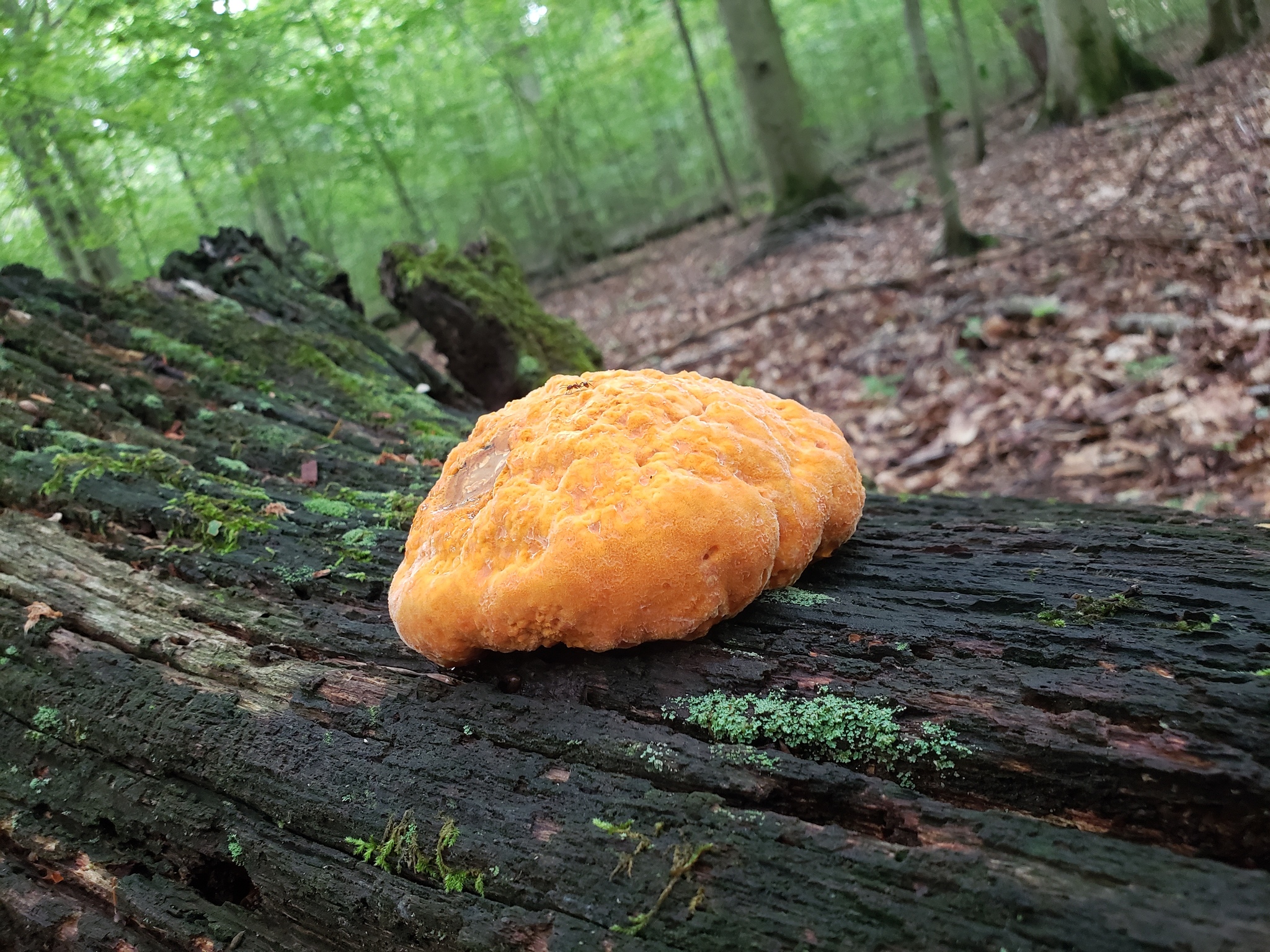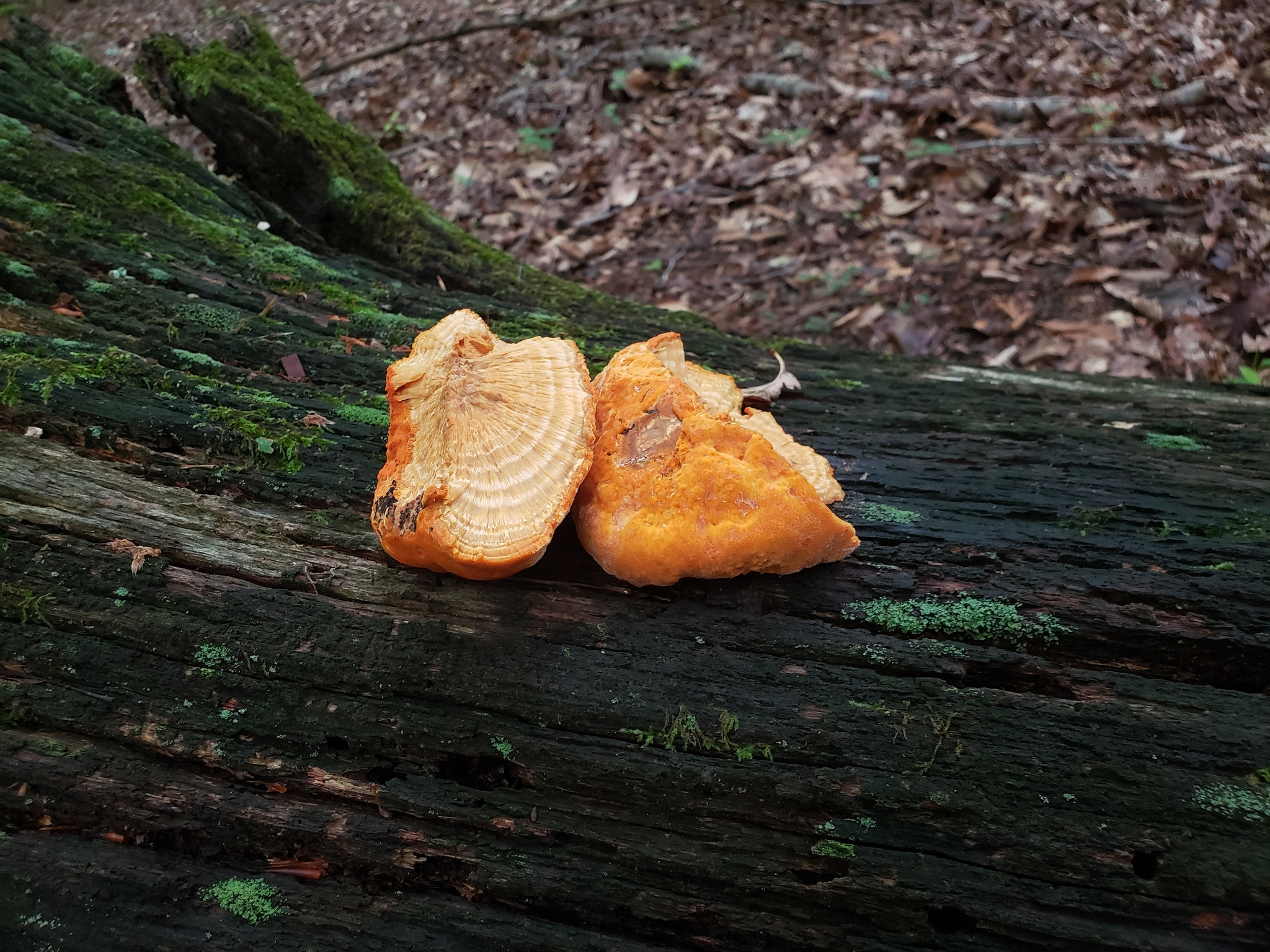Map Snapshot


3 Records
Seasonality Snapshot
Source: Wikipedia
| Hapalopilus croceus | |
|---|---|

| |
| Scientific classification | |
| Domain: | Eukaryota |
| Kingdom: | Fungi |
| Division: | Basidiomycota |
| Class: | Agaricomycetes |
| Order: | Polyporales |
| Family: | Polyporaceae |
| Genus: | Hapalopilus |
| Species: | H. croceus
|
| Binomial name | |
| Hapalopilus croceus | |
| Synonyms[3] | |
|
List
| |
Hapalopilus croceus is a species of polypore fungus. It was originally described by Christian Hendrik Persoon in 1796 as Boletus croceus; Marinus Anton Donk transferred it to genus Hapalopilus in 1933 to give it the name by which it is currently known. The species is found in Asia, Europe, Oceania, and North America, where it grows on the rotting wood of deciduous trees.[4]
Description
[edit]It is a semicircular orange to yellow polypore mushroom which can grow up to 8 inches wide. The underside is a reddish orange color. The spore print is white. It rarely grows in forests across Europe and North America.
| Hapalopilus croceus | |
|---|---|
| Pores on hymenium | |
| Cap is flat | |
| Hymenium attachment is not applicable | |
| Lacks a stipe | |
| Spore print is white | |
| Ecology is saprotrophic | |
| Edibility is inedible | |
Distribution and Habitat
[edit]It is mainly found decomposing old oak and Chessnut trees. This mushroom is considered rare as other mushroom decompose the trees first.
Edibility
[edit]Edibility is inedible and potentially poisonous
References
[edit]- ^ Dahlberg, A. (2019). "Hapalopilus croceus". IUCN Red List of Threatened Species. 2019: e.T58521209A58521216. doi:10.2305/IUCN.UK.2019-2.RLTS.T58521209A58521216.en. Retrieved 19 October 2024.
- ^ Lowe JL. (1975). "Polyporaceae of North America. The genus Tyromyces". Mycotaxon. 2 (1): 1–82 (see p. 21).
- ^ "Hapalopilus croceus (Pers.) Donk". Species Fungorum. CAB International. Retrieved 2014-07-03.
- ^ Zhishu B, Zheng G, Taihui L (1993). The Macrofungus Flora of China's Guangdong Province. New York, New York: Columbia University Press. p. 199. ISBN 9789622015562.


